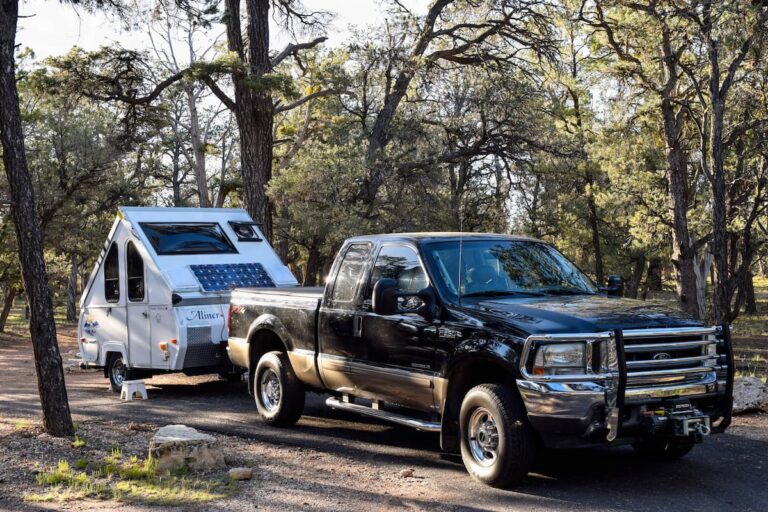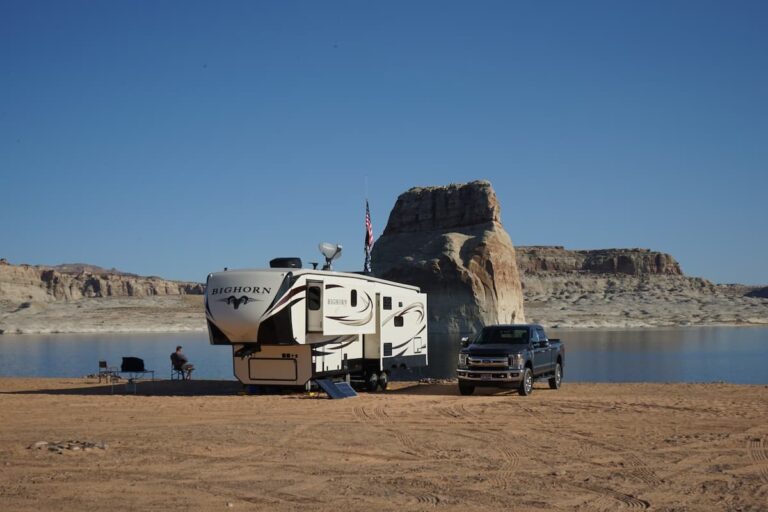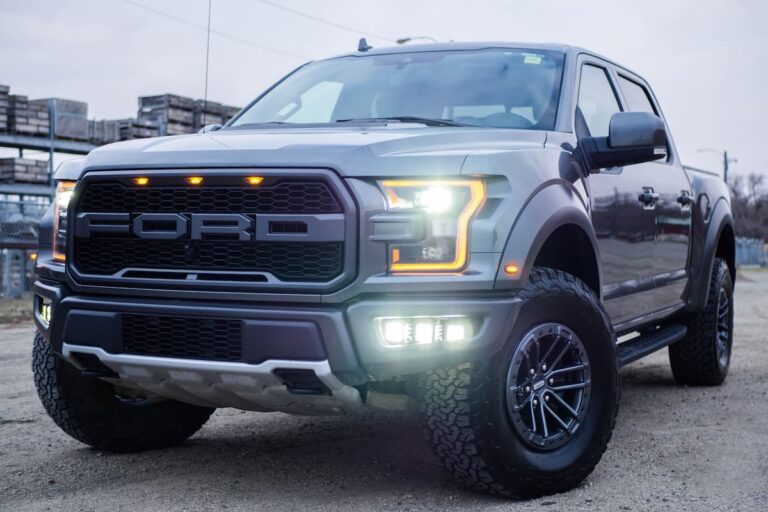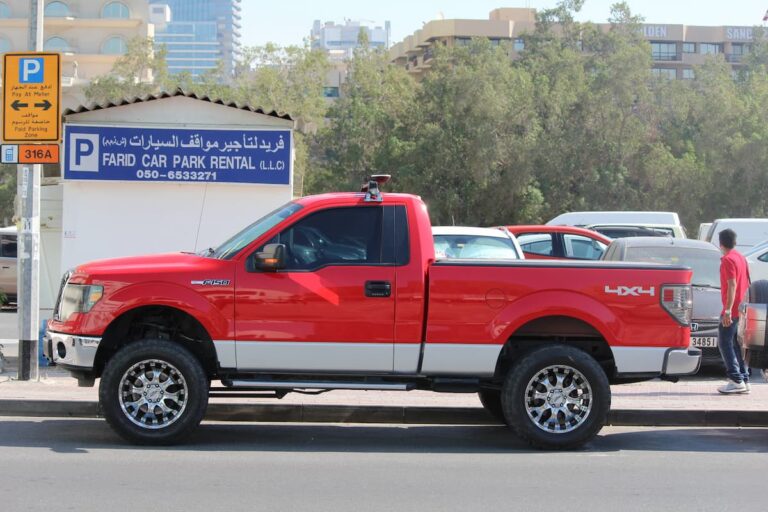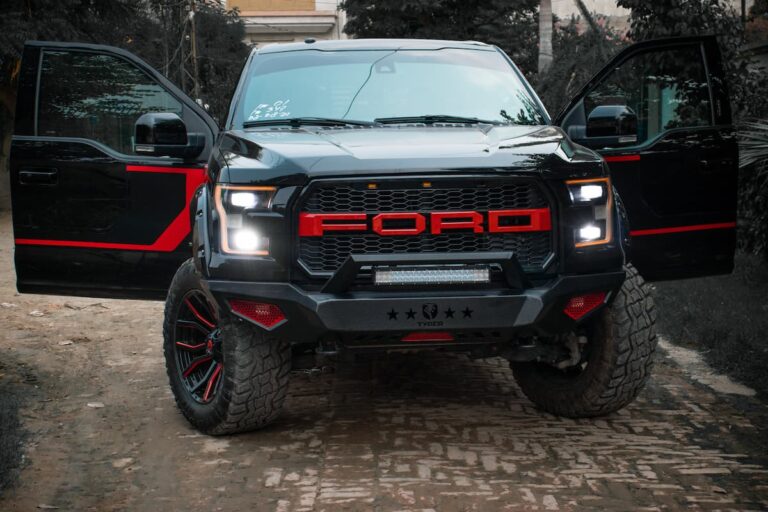Will Ford F-150 Wheels Fit A Dodge Ram 1500?
Many people think all wheels are the same and can be swapped with any vehicle.
As it turns out, many trucks use the same rim patterns on their wheels, making it possible to use one model’s wheels on another.
So will a Ford F-150’s wheels fit on a Dodge Ram 1500?
The wheels on pre-2000 models of the Ford F-150 and the Dodge Ram 1500 are interchangeable. Both use the same five-lug pattern rims and have the same depth for the lug bolts. You can easily swap wheels between the two trucks without any issues.
After the year 2000, Ford modified its rims, making swapping tires with a Ram 1500 slightly more difficult.
Ford F-150 Wheels Versus Ram 1500 Wheels

The important part of a wheel is not the tire itself but the rim. If two vehicles use the same rims, you can swap wheels between them easily.
Both the F-150 and Ram 1500 use the same rim pattern. This is a five-pointed pentagon that makes up the lug nut holes.
The lug nuts are what hold the rim to the axle. The wheel is placed on the axle via a central hole and aligned with the bolts facing outwards.
Lug nuts tighten down on these bolts to ensure the wheel stays on and doesn’t wobble while driving.
Pre-2000 models of F-150s and Ram 1500s have interchangeable wheels. However, while the lug pattern is the same on newer models, the wheels are not as compatible.
The lug size of the tires isn’t a perfect match, so you’ll need the right ones for your truck. Ford also changed the size of its center hole to be smaller than the one on the Ram 1500.
Fortunately, this isn’t a big deal if the wheel change is done by a professional that can space them properly.
While a professional mechanic will have no problem swapping rims between the two trucks, keep in mind that the tires on those rims make a significant difference.
You have to ensure you’re using the right-size tire for the rims of your truck – that the tires can fit within the truck’s wheel wells and have plenty of space to rotate.
Swapping out rims without ensuring the tire fits correctly can also cause other problems:
Your speedometer won’t work properly if it’s calibrated to a different size tire than those currently on the rims.
The tachometer – the instrument that indicates the engine’s rotation speed in RPMs – can also read improperly.
Additionally, tires that rub the wheel well wear faster, and improperly-sized tires can cause stability issues with the truck.
A certified mechanic is the best person to put on new wheels if you’re swapping them between two trucks of different models. They can also take care of additional or necessary modifications, leaving you with the safest possible vehicle.
Things to Keep in Mind
Any modifications to a truck can prevent the wheels from being interchangeable. For example, fender flares or modified wheel wells require specific wheels to function properly.
You also can’t have a loose rim – something particularly noteworthy when moving wheels from a recent Ram 1500 to an F-150.
Because the center hole on the rim of a Ram 1500 is larger than the F-150, you run the risk of a loose wheel. Any wiggle there can cause problems controlling the truck and add extreme wear to the vehicle and the tires.
If the wheels aren’t the same diameter but still fit, you’ll need to re-calibrate all of your truck’s meters and the internal computer.
Always fully tighten the lugs. Vibrations from driving can loosen the lugs and cause the tire to blow or fall off if it isn’t properly tightened.
Types of Rims
The rims are the defining feature that determines what wheels can be used on what vehicle, so it’s important to know your options for the types of rims and why you would want them.
Most rims are made of steel, aluminum, or chrome.
Steel rims used to be the standard in the automotive industry. They are heavier than aluminum rims, so manufacturers have moved away from them to boost performance.
That said, steel rims are a good idea in winter weather as the extra weight provides a better grip on the road. Plus, steel rims are usually the most inexpensive option.
Aluminum rims are very light in comparison to steel rims. They’re usually an aluminum alloy (aluminum mixed with another metal like nickel).
They’re the most popular rims on the market because they reduce weight and increase performance. They are more expensive, but they will improve your gas mileage and put less wear on the car.
Chrome rims are really chrome-plated rims. They’re popular for their shininess, but they’re also very resistant to rust.
Choosing them is more of an aesthetic choice, as harsh weather is tough on them.
Rim size and tire size must match. Your vehicle will have a range of rim/tire sizes that can fit in the wheel well, but the two must be the same when you put on new wheels.
Each rim will also have a bolt pattern that must match the axle. Most will be either a five or six-lug pattern.
If you want wider tires, you also need a larger rim to hold the tire. Wider wheels are a good option for better control on wet or icy roads.
Conclusion
Before the year 2000, the F-150 and Ram 1500 used the same rims and lug patterns for their wheels.
These older models can swap wheels interchangeably, but newer models need additional modifications for the wheels to fit properly.
Have a certified mechanic confirm the tires will fit properly instead of just comparing the lug pattern. You should also make sure the tire diameter of both trucks is the same before you make the swap.

